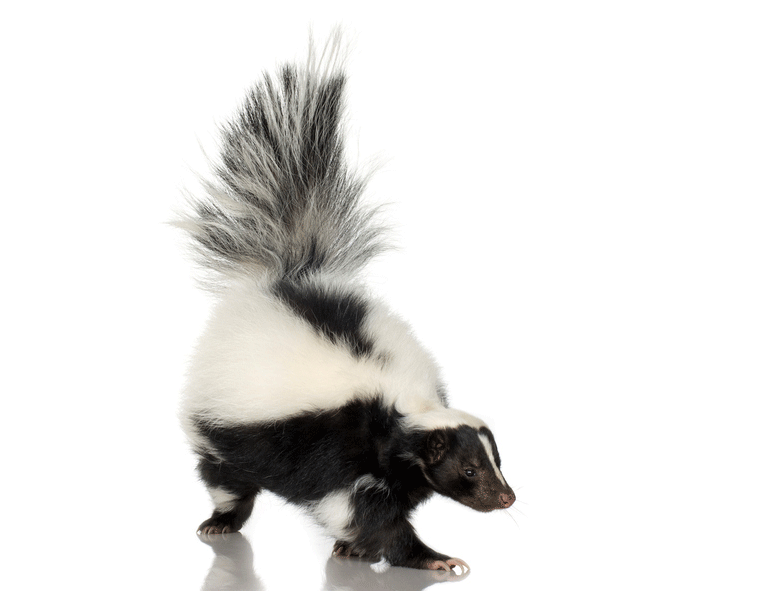SKUNKS

Physical Characteristics: Skunks are mammals best known by their ability to spray a liquid with a strong musty smell. They can differ in size, color and appearance but can quickly be identified by their white “warning” stripe, and can range from 18-36” in length. They have an elongated torso with short, muscular legs and long sharp front claws for digging.
Diet: Skunks are omnivorous and change their diets as the seasons change. They will eat almost anything, consuming a wide variety of vegetation, animal matter, insects, reptiles as well as fruit, nuts and fungi.
Breeding: Skunks have one litter per year called “kits” usually born between May and June; ranging from 2-10 kits per litter. Although they are nocturnal, female skunks are often seen in the early evening with their kits looking for food.
Habitat: Skunks use their long claws to dig a den or often will occupy an abandoned den built by another animal, such as a fox or a woodchuck. Skunks will also live above ground in hollow logs, woodpiles, or in brushes. It is also common for skunks to build their homes under porches, houses, garages, and buildings Skunks have a high tolerance for humans and they are often found rummaging through garbage or trash cans.
Inspections: The first thing to do in wildlife control is a proper inspection. We will determine if skunks are the problem. Skunks are famous for being smelled long before ever being seen. Evidence of a skunk are faint “skunky” odors, holes in the soil on your property, rolled back sod, barking animals and the absence of smaller rodents such as squirrels and chipmunks.
Trapping: Humane trapping and exclusion measures will be taken to keep skunks from returning to your property or in your home.

